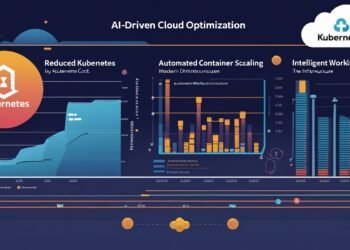In the fast-evolving digital era, enterprise innovation is no longer a luxury—it’s a necessity. Businesses that want to stay competitive must continuously adapt, evolve, and reimagine how they operate and deliver value. In 2025 and beyond, two powerful technologies—cloud computing and artificial intelligence (AI)—are leading this charge, reshaping the very foundation of enterprise innovation.
Together, they are unlocking new ways to think, build, scale, and transform.
The Cloud: Innovation at Speed and Scale
Cloud computing has matured from a cost-saving infrastructure alternative to a full-scale innovation platform. In 2025, enterprises are relying on cloud environments not just to run their workloads, but to accelerate experimentation, collaboration, and go-to-market strategies.
Here’s how:
- Agility and Speed: Development cycles that once took months are now reduced to weeks or even days. Cloud platforms offer on-demand computing power, prebuilt services, and APIs that allow teams to quickly test and launch new ideas.
- Scalability: Enterprises can scale applications, services, and data analytics to meet customer demand without upfront infrastructure investments.
- Global Reach: Cloud services provide seamless connectivity and real-time access to global teams, partners, and customers, making collaboration and deployment borderless.
- Security and Compliance: Cloud providers now embed advanced security features and compliance tools, helping enterprises manage risk while focusing on innovation.
In this landscape, cloud is no longer just “where” data lives—it’s how innovation happens.
AI: The Intelligence Engine Behind Transformation
AI has moved from theoretical promise to practical, enterprise-wide application. In 2025, it’s the core driver of smarter decisions, predictive insights, and intelligent automation.
AI’s role in enterprise innovation includes:
- Predictive Analytics: AI algorithms forecast trends, customer behaviors, and business risks with increasing accuracy—empowering leaders to act proactively, not reactively.
- Automation of Complex Processes: AI-powered bots and agents handle everything from financial analysis and HR inquiries to supply chain optimization and IT operations.
- Natural Language Processing (NLP): AI tools can understand and generate human language, improving customer service, creating content, and enhancing communication across channels.
- Personalization at Scale: AI tailors products, services, and experiences to individual customer preferences in real time—fueling loyalty and competitive differentiation.
From product design and marketing to operations and support, AI is embedded across the enterprise as both a tool and a partner.
Cloud + AI: A Catalyst for Continuous Innovation
While each technology is transformative on its own, the convergence of cloud and AI creates exponential value. This fusion enables what many call the “intelligent enterprise”—organizations that can learn, adapt, and innovate faster than ever before.
Key advantages of this synergy include:
- AI at Scale: Cloud platforms allow enterprises to train, deploy, and scale AI models with massive data sets across distributed environments.
- AI-as-a-Service: Major cloud providers offer ready-made AI tools—such as image recognition, speech-to-text, or fraud detection—that any department can integrate, even without deep technical expertise.
- Smarter Apps and Services: Developers use cloud-based AI tools to embed intelligence into everyday applications—making them more responsive, efficient, and personalized.
- Real-Time Decisioning: Streaming analytics on cloud platforms allow AI to interpret live data from IoT devices, customer interactions, and business systems, driving timely, automated decisions.
Together, cloud and AI turn enterprises into living systems—constantly sensing, learning, and evolving.
Real-World Impact Across Industries
Here’s how cloud and AI are driving innovation across different sectors in 2025:
- Retail: AI predicts inventory needs, analyzes consumer sentiment, and powers hyper-personalized online shopping. Cloud platforms manage omnichannel experiences and real-time data.
- Healthcare: AI-assisted diagnostics, predictive care, and virtual health platforms are running on secure, compliant cloud infrastructure.
- Manufacturing: Predictive maintenance, robotic process automation, and real-time quality control are being driven by AI models trained and deployed in the cloud.
- Finance: Cloud-based AI detects fraud, improves customer onboarding, and enhances financial forecasting.
These transformations are just the beginning. The cloud-AI ecosystem will continue to evolve, opening up possibilities not yet imagined.
Challenges to Consider
Innovation doesn’t come without hurdles. Enterprises must be mindful of:
- Data Integration: AI thrives on clean, unified data—requiring robust integration strategies across cloud environments.
- Ethics and Bias: As AI makes more decisions, ensuring fairness, transparency, and accountability is critical.
- Talent Gaps: Organizations must invest in upskilling teams to work with AI tools and cloud-native architectures.
- Governance and Compliance: Innovation must align with industry regulations and internal governance structures.
The Road Ahead: Innovation as a Mindset
The real transformation in 2025 isn’t just technological—it’s cultural. Leading enterprises are adopting innovation as a mindset, not just a department. Cloud and AI are the enablers, but it’s visionary leadership, empowered teams, and agile processes that turn potential into impact.
By embracing cloud and AI together, businesses are not just improving—they’re reinventing.
The next wave of enterprise innovation has arrived. Are you ready to ride it?

















